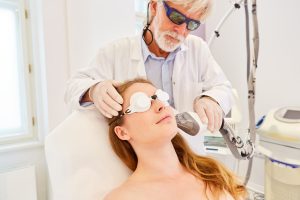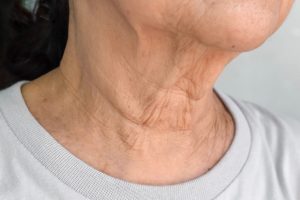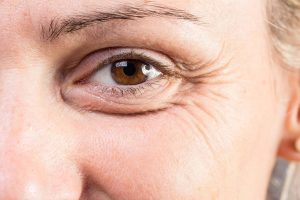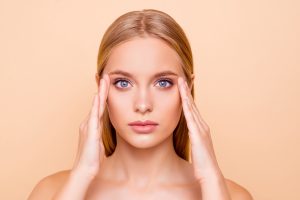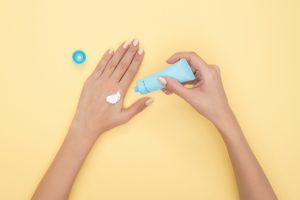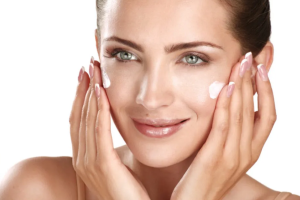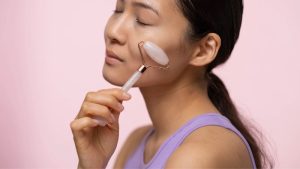When To Start Using Anti-Aging Cream
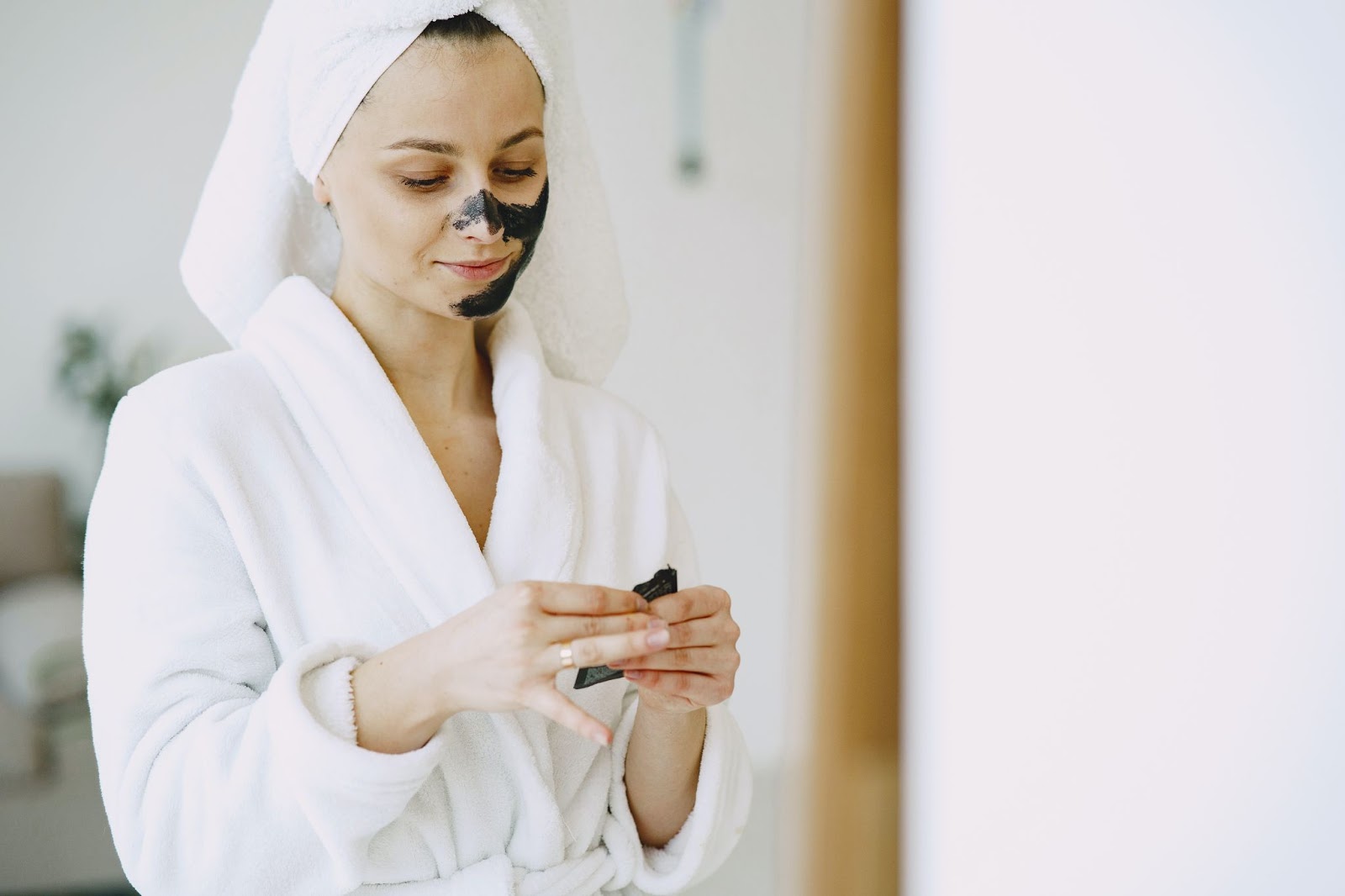
No one wants to look older than they feel inside, but sun exposure and certain lifestyle habits catch up with us and can accelerate signs of aging as we get older. With so many skincare products on the market often marketed to people who already have wrinkles and fine lines, it can be confusing to know when you should start to focus on skincare. If you’re finding yourself asking, “When should I start using an anti-aging cream?” you may be surprised to find that the answer is likely sooner than you think.
When Does Skin Start To Age?
It may seem hard to believe, but according to the American Academy of Dermatology Association, your skin starts to show visible signs of aging in your 20s. Visible signs of aging begin to occur in your 20s due to cumulative sun exposure and the reduced production of collagen, an essential protein produced by the body that keeps the skin looking young and wrinkle-free.
While significant fine lines, wrinkles, and sunspots may not begin to show up until later in life, sun damage can start to show up in the form of dry or blotchy skin, and you may start to notice creases and lines related to movement, called motor wrinkles. People most commonly see the first signs of aging around the forehead and brow and the corners of the eyes.
What Are Some Common Visible Signs Of Aging?
People experience different signs of aging in each decade, beginning in their 20s. As you move from adolescence into adulthood, the cumulative effect of sun exposure you have experienced throughout your lifetime will continue to build, damaging the skin and contributing to signs of aging.
Here are the most common signs of aging by decade:
In Your 20s
One of the first signs of aging that you’ll notice in your 20s is the loss of fat and volume in your face, creating an overall slimming effect. But, alongside a slimmer face and profile, your skin starts to develop fine lines and creases that result from movement, known as motor wrinkles.
You’re most likely to experience motor wrinkles at the corners of the eyes, around the brow, and at the corners of the mouth, and motor wrinkles tend to mirror the expressions you make most often. For example, people who regularly raise their eyebrows in a show of surprise are more likely to experience horizontal lines across the forehead.
At the same time, those who frown or furrow their brow are more likely to experience frown lines. In addition, people who have spent a lot of time squinting in the sun, staring at a computer, or looking at screens can start to develop crow’s feet or lines at the corners of the eyes.
Many people start to experience skin discoloration during their 20s as a result of cumulative sun exposure taking its toll. For example, Melasma, a brown discoloration that commonly occurs on the cheeks or forehead, commonly occurs in women in their 20s as a result of a combination of sun exposure, changes in hormone levels due to birth control or pregnancy, or exposure to certain antibiotics.
While the condition is more common in women, it can also occur in men and is most commonly seen in people with darker skin tones. Skin redness, blotchiness, and increased freckling can also occur, particularly in people who are not careful about using sun protection.
In Your 30s
As you enter your 30s, the signs of aging that started to appear in your 20s are likely to continue and progress. While most people in their 30s still have a youthful appearance, their skin may become more dull, tired, and damaged.
In terms of fine lines and wrinkles, the crow’s feet around your eyes typically become significantly more prominent in your 30s, and your eyelids may start to appear heavy. Frown lines between the eyebrows begin to appear or become more profound, and triangular lines from your nose to the corners of the mouth may start to form shadows or deepen.
Your likelihood of experiencing certain motor wrinkles will depend in part on how frequently you make the expressions that cause the lines. Still, the older you get, the more likely you are to notice these changes.
Sun damage also continues to accumulate in your 30s, with many people starting to notice small brown spots along the face, particularly on the cheeks or forehead. Some people may start to experience tiny red lines formed by dilated blood vessels throughout the face, although they are most commonly seen on the nose.
In Your 40s
Signs of aging continue to progress in your 40s, with lines further deepening and becoming more prominent even when you are not making a facial expression. In some people, lines will start to be visible at all times. Lines commonly start to appear around your upper lip in your 40s, and people who smoke will notice that these lines appear quickly and rapidly deepen.
The effects are exacerbated by sun exposure, as this area is commonly exposed to the sun. More sunspots dilated blood vessels, and skin discoloration may appear.
Some people may notice a loss of elasticity in their skin, which contributes to sagging or droopy skin, particularly in the neck and jowls. Eyelids may appear more tired, and crepey skin can appear on the neck and decolletage. Increased skin dryness is also more common as we age.
In Your 50s and Beyond
People in their 50s and beyond can expect to experience aging that reflects the cumulative total of unprotected sun exposure that they have experienced, as well as the cumulative effects of other lifestyle factors like smoking, excess alcohol consumption, or a poor diet. No matter what types of prevention you do, your skin will continue to age, of course, but aging can be expedited or slowed based on the changes that we make.
As collagen and elastin in the skin continue to break down and production continues to slow, drooping and sagging of the skin tend to become more pronounced. Many people lose fat in the face, which causes the skin to have a sunken appearance.
Our skin takes on a thin, translucent appearance that makes the blood vessels show through more prominently, causing a discolored blue or green appearance in many people. Discoloration also occurs as a result of ongoing sun exposure that causes sunspots to spread or darken.
Women in their 50s and beyond often find that their skin also changes due to hormone changes. A drop in women’s estrogen levels causes changes to skin moisture that can cause the skin to look and feel drier. This exacerbates the appearance of wrinkles and fine lines, which appear more profound and more prominent.
How Can Skin Aging Be Prevented?
No one wants to experience premature aging, but not everyone understands what it takes to prevent or slow skin aging. Preventing premature aging comes down primarily to making overall healthy lifestyle changes, including:
- Wear sunscreen every day of SPF 30 or higher and protect your skin by reapplying multiple times throughout the day. Avoid unnecessary sun exposure by skipping tanning and using self-tanner instead. UV ray exposure from the sun and tanning beds dramatically speed up the way that your skin ages.
- Don’t smoke. If you’re currently smoking, quit. Smoking causes wrinkles and contributes to a decline in the production of CoQ10, an antioxidant that contributes to skin health and aging.
- Try not to make the same facial expressions repeatedly. While it can be hard to change habits, you can help reduce lines caused by squinting by wearing sunglasses or lowering the brightness of the screens you are using.
- Eat a healthy, well-balanced diet full of fruits, vegetables, lean protein sources, and whole grains, as these foods contain antioxidants that help prevent premature aging.
- Drink less alcohol, as it is drying to the skin and can cause damage.
- Get plenty of exercise to improve your circulation.
- Use gentle cleansers and products on your skin and wash your face twice a day and as soon as possible every day.
- Moisturize your skin daily using an effective anti-aging cream.
Summary
Once you reach adulthood, it’s never too early to start using an anti-aging cream, as signs of aging start to appear in your 20s. The best way to prevent premature aging is to protect your skin from the sun using sunscreen with SPF 30 or higher, live a healthy lifestyle, and moisturize regularly. Even if you have already experienced signs of aging, it’s never too late to get started taking care of your skin and preventing future damage.
Sources:
Act Your Age When It Comes To Skin Care | AAD
Melasma: Diagnosis and Treatment | AAD
Decreased Collagen Production in Chronologically Aged Skin | NCBI



